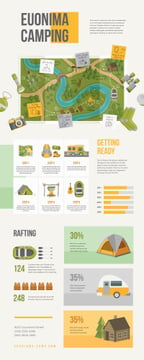Increase Your Online Revenue And Sales By Selling Camping Tents
Increase Your Online Revenue And Sales By Selling Camping Tents
Blog Article
Taking Pictures of the Evening Skies
A range of elements can affect evening skies photography. From weather to upcoming celestial occasions, you'll intend to plan in advance to make sure success.
How do you hold a tent down?
The shutter speed you select establishes whether stars look like precise pin-points or path across the image. A great rule of thumb is to restrict the direct exposure to 500 seconds, or the equivalent of your lens's focal size.
Location
Among one of the most essential consider an excellent photograph is where you take it. Go for areas with minimal light contamination, and stay clear of places that have brilliant city lights and skyscrapers.
Also, look for an area that offers foreground aspects to produce make-ups with. For example, dune patterns, wind-sculpted ridges and rocky outcrops can all provide fascinating foreground elements to assist inform the tale of your evening sky photo.
It is additionally handy to research huge occasions such as meteor showers and lunar eclipses to take advantage of opportunities for terrific images. Making use of a tool such as the Professional photographer's Ephemeris can be exceptionally useful when planning your shoots. It helps you to determine moon phases, Galaxy position and other expensive occasions. Also, take into consideration shooting in RAW layout as opposed to JPEG as this gives you a lot more flexibility when refining the pictures. This is especially real if you prepare to publish your pictures.
Camera Setups
Obtaining the right video camera settings is essential for any photo, however especially so for evening sky images. A wide-angle lens is best for recording even more of the Galaxy and reducing star trails, as well as a longer shutter rate to quit the motion of celebrities and reveal their details.
For an optimum level of quality, shoot in RAW style instead of JPEG, which permits you to maintain even more information and gives adaptability throughout post-processing. This can likewise include in submit size, so make sure you have a lot of storage area and added flash memory card handy.
Establish your focus to manual concentrating by flipping the AF/MF turn on your lens into MF mode. You might need to take a few test shots and inspect the photo playback on your video camera's LCD screen until you attain ideal, determine manual emphasis. It's an excellent idea to do this throughout the day with your selected lens and the place you will certainly be shooting at evening, to verify the precision of your focus setup.
Illumination
A good night skies photo calls for the ideal conditions. This consists of a dark skies, however additionally an interesting foreground element such as a hill on the horizon, a lake to show the celebrities, or a human aspect like a barn or shed. You can also use a headlamp to illuminate the foreground and include some dramatization or depth to your picture.
One of the most important video camera settings for evening skies digital photography are the aperture and shutter speed. The wider the aperture, the more light that gets to the sensing unit. This allows you to capture intense stars in a relatively short quantity of time.
The shutter rate identifies whether your stars will certainly be pin-point best or if they will appear as celebrity tracks due to the Earth's turning. Make sure to take multiple lengthy exposure shots and stack them in post-processing for the very best results. Last but not least, shoot in commercial tent RAW setting to give on your own maximum latitude in post-processing.
Composition
The key to beautiful celebrity shots isn't a premium telescope, a new wide-angle lens or a top-of-the-line Canon or Nikon electronic camera. It's method, planning and make-up.
For starters, scout your shoot place ahead of time to obtain a feel for the design and possible structures. Consider including foreground aspects such as rocks, a lake or alpenglow on the landscape to add personality and interest to your pictures.
Remember the Regulation of Thirds when composing your images. This basic concept assists balance and combine images. It's also useful for concentrating on sights in your image, such as rock attributes or the Milky Way. Likewise, keep in mind to prepare your shoots around moon phases-- shooting at a full moon can overpower stars and create a silhouetted shape, while shooting on evenings with a new moon can aid you see constellations a lot more clearly.
How do you maintain a canvas tent?
